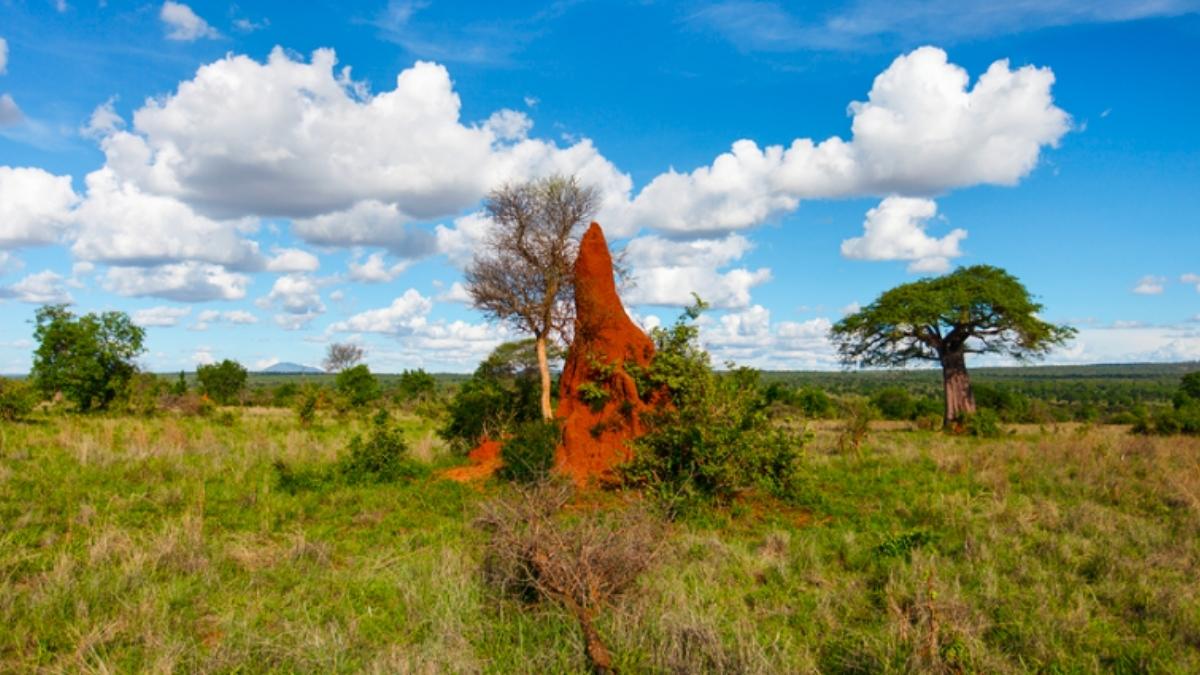
Termites. We commonly associate them with being destructive pests that wreak havoc on the wood in homes and other structures. But very few of the thousands of known termite species are actually a nuisance to people.
The majority of these insects live in the ground. Those in Africa are “mound builders”, constructing some of the most impressive structures in nature. And scientists have recently discovered that these termite mounds are critical to maintaining the health of various ecosystems, including deserts, tropical rain forests and warm woodlands.
What is a Termite Mound?
From the outside, termite mounds are impressive to look at, with the largest African mounds measuring 30 feet tall and 80 feet wide, and housing millions of termites. But the true wonder is the interior design, made up of simple materials like sand and clay, and consisting of numerous tunnels and galleries.
While no termite could construct a termite mound on its own, working in groups of one or two million, they become a team of highly skilled architects. Essentially, they build their own town that includes a nursery, farms and a complex ventilation system that controls temperature, making the mounds cool in the day and warm in the evening.
The mounds can take four or five years to build, but that doesn’t faze these busy workers. Always focused on the task at hand, they persevere even when a heavy rainfall destroys part of the mound, working together to rebuild it without missing a beat.
Environmental Guardians
These mounds are wonderful habitats that protect termite colonies against severe weather conditions and predators, as well as provide for their basic necessities. But how do they benefit the environment?
A recent report by Princeton University researchers in the journal Science states that termite mounds may help slow desertification (fertile land becoming desert, often due to drought) in ecosystems that are highly vulnerable to it, such as the drylands of Africa, South America and Asia.
The report notes that these mounds store nutrients and allow water to better penetrate the soil thanks to their complex internal system of tunnels. These factors allow vegetation on or near the mounds to flourish and the surrounding environment is able to sustain on far less rainfall than similar areas without termite mounds.
The researchers also found that these mounds contributed to recovery after periods of hard drought by keeping dormant seeds protected and enabling re-vegetation to occur more easily.
Wood Pests Vs. Soil Saviors
While the termites we hear about most often are certainly not welcome in our homes, termites that live in the ground are essential for overall soil health, preventing erosion and helping to fertilize it.
And the “mound builders” in Africa who tirelessly work in the soil are far from pests. Ecosystems with their mounds have a better chance of surviving and recovering from extreme environmental conditions, making these termites saviors to these environments.
These tiny insects make the expression “don’t judge a book by its cover” an understatement.
Sources:
National Geographic. (2014, August 1). Collective Mind in the Mound: How Do Termites Build Their Huge Structures?
Princeton University. (2015, February 5). Tiny termites can hold back deserts by creating oases of plant life.
The New York Times. (2015, March 2). Termites: Guardians of the Soil.




Leave a Reply